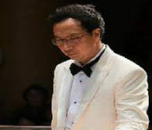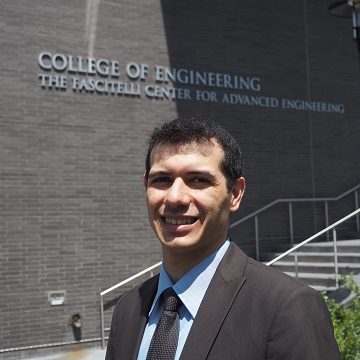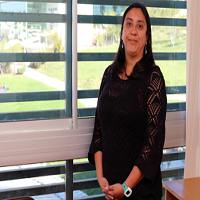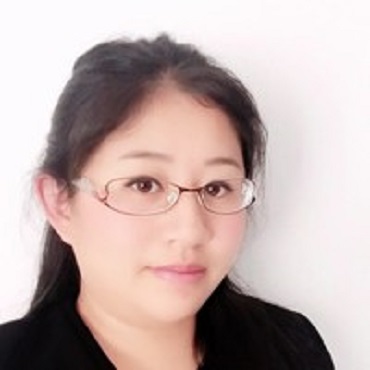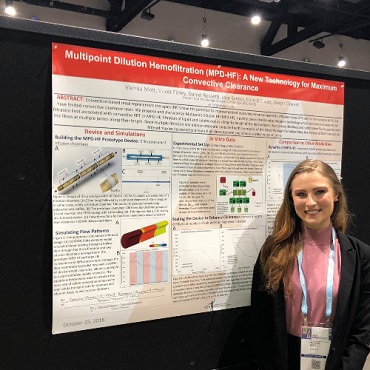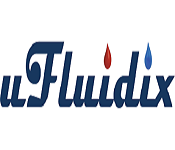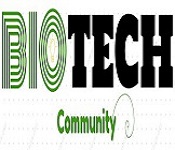
Microfluidics Conference

Theme: Microfluidics Research Trends and Techniques
The 7th International Microfluidics Conference welcomes the global audience to participate in the conference which is to be held November 10 - 11, 2021 at Las Vegas, USA. The main theme of the conference is “Microfluidic Research Trends and Techniques”. This conference brings together the innovations in microfluidics and brings the key opinion leaders and thought leaders in the field from around the world for two intensive days of scientific presentations, networking as well as engagement with companies developing innovations in tools and technologies in this space. The purpose of Microfluidics 2021 is to provide an international technical forum to showcase recent advances in microfluidics, Bio-MEMS, and medical microsystems. Microfluidics 2021 brings together top researchers and emerging research leaders to spark scientific exchange and create community.
Session 1: Micro/Nanofluidics Research and Advances
Microfluidic innovation offers a developing arrangement of instruments for controlling little volumes of liquids to control concoction, organic, and physical procedures that are applicable to detecting. The improvement of these apparatuses dependent on lithographic methods empowers joining with electronic and optical components important for the development of operational sensor. Microfluidics is an integrative domain originating from a mix of microanalysis, biodefence and microelectronics down to the micrometric and sub-micrometric scale.
Microfluidics Conference | Microfluidics Congress | Microfluidics Webinar | Microfluidics Meetings
Session 2: Lab-On-A-Chip Technology
A lab-on-a-chip (LOC) is a gadget performing on a scaled down scale one or a few investigations normally did in a research facility. It incorporates and robotizes numerous high-goals lab methods, for example, blend and examination of synthetic concoctions or liquid testing into a framework that fits on a chip. There are numerous points of interest to working at this scale. Tests investigation can happen on the spot, where the examples are produced, instead of being conveyed to a broad research center office.
Microfluidics Conference | Microfluidics Congress | Microfluidics Webinar | Microfluidics Meetings
Session 3: Organs-on-chips
Organs on chips are 3D cell culture microdevices planning to repeat the key elements of living organs on a PC chip. These microfluidic gadgets are more productive than customary cell culture systems since they can imitate microenvironments just as their effect on organ work. This permits to investigate the human physiology for a particular organ and start headways in counterfeit ailment models.
Microfluidics Conference | Microfluidics Congress | Microfluidics Webinar | Microfluidics Meetings
Session 4: Bio-MEMS/NEMS and Chips
A microfluidic chip is an example of microchannels, shaped or engraved. This system of microchannels fused into the microfluidic chip is connected to the large scale condition by a few openings of various measurements burrowed out through the chip. It is through these pathways that liquids are infused into and emptied from the microfluidic chip. Liquids are coordinated, blended, isolated or controlled to achieve multiplexing, mechanization, and high-throughput frameworks.
Microfluidics Conference | Microfluidics Congress | Microfluidics Webinar | Microfluidics Meetings
Session 5: Microfabrication Technologies
Microfabrication procedures permit to study and assembling miniaturized scale structures down to the micrometer scale and littler, coordinated into microfluidic gadgets. It is utilized in a wide scope of uses, for example, reproduction forming or microcontact printing and strikingly permits to correctly control cells shape and capacities by making adjusted microstructures.
Microfluidics Conference | Microfluidics Congress | Microfluidics Webinar | Microfluidics Meetings
Session 6: Electrochemistry and microfluidics
Electrochemistry contemplates the connection between electrical flow streams and synthetic responses. Electrochemical identification components can be coordinated inside a microfluidic gadget making it solid and profoundly touchy. Electrochemistry has numerous applications, especially in logical science, with the improvement of electrochemical sensors, lab-on-a-chip and biosensors.
Microfluidics Conference | Microfluidics Congress | Microfluidics Webinar | Microfluidics Meetings
Session 7: Acoustic Droplet Ejection
Acoustofluidics manage the utilization of acoustic fields, essentially ultrasonics onto liquids inside microfluidic channels permitting to control cells and particles. It alludes to the investigation and control of acoustic waves on microscale to nanoscale fluidic conditions. These mechanical waves are incurred on the liquid through the excitation of the microchannels dividers with an actuator. Acoustics offer promising capacities in the control of the two liquids and particles inside those liquids on the smaller scale/nano-meter scale.
Microfluidics Conference | Microfluidics Congress | Microfluidics Webinar | Microfluidics Meetings
Session 8: Bio-sensing Technologies
A biosensor can be characterized as a conservative expository gadget or unit joining an organic or organically determined touchy acknowledgment component immobilized on a physicochemical transducer to quantify at least one analytes. Microfluidic frameworks, then again, give throughput handling, improve transport for controlling the stream conditions, increment the blending pace of various reagents, lessen test and reagents volume (down to nanoliter), increment affectability of recognition, and use a similar stage for both example readiness and discovery.
Microfluidics Conference | Microfluidics Congress | Microfluidics Webinar | Microfluidics Meetings
Session 9: Digital microfluidics
Digital Microfluidics is also called droplet microfluidics or emulsion science, advanced microfluidics is one of the fundamental application fields of microfluidics. It empowers to control independent beads on a substrate utilizing electro-wetting. This permits to produce and control uniform, reproducible beads over the trials' parameters. Droplets generation can be utilized in an enormous scope of utilizations like in amalgamation of nanoparticles, single cell examination, and exemplification of organic elements. This innovation will likely turn into a significant instrument for sedate conveyance and bio sensing, by giving new answers for cutting edge diagnostics and therapeutics.
Microfluidics Conference | Microfluidics Congress | Microfluidics Webinar | Microfluidics Meetings
North America dominated the market in 2020:
North America accounted for the largest share of the microfluidics market in 2018, followed by Europe and Asia Pacific. The largest share of the North American region is mainly attributed to the higher incidence rate of chronic diseases, availability of insurance coverage for laboratory testing procedures, enough reimbursements for medical devices, and presence of well-structured distribution channels in the region. In addition, high demand for self-administration and home healthcare devices, and increasing applications of micropumps, inhalers, and transdermal microneedles for chronic conditions such as migraine, diabetes, cancer pain, and asthma have further resulted in the large share of this market.
Microfluidic Devices Market Overview:
The global microfluidic devices market size is predicted to reach $6.4 billion by 2020, growing at a CAGR of 23% during the forecast period. The market is driven by factors such as, increase in demand for point of care testing products, microfluidic technologies for miniaturization of chip, and rising demand for genomics and proteomics.
Global Microfluidics Market by Geography
Microfluidics Market Share Insights:
Some key industry contributors are Illumina, Inc., Agilent Technologies, Caliper Life Sciences (acquired by perkinelmer, Inc.), Cepheid, Danaher Corporation, Life Technologies Corporation (acquired by Thermo Fisher Scientific, Inc.), Bio-Rad Laboratories, Inc., Abbott Laboratories, F. Hoffmann-La Roche Ltd, and Fluidigm Corporation.
Companies are introducing new products to strengthen their market position. For instance, In February 2015, Illumina, Inc. Launched neoprep, an automatic DNA and RNA sample preparation platform. Through the neoprep microfluidics cartridge, 16 samples are prepared at a time. Innovation and research & development by the market players in the microfluidics segment are expected to propel the market growth in the coming years.
Global Universities Associated with Microfluidics
- ETH Zurich
- Swansea University
- University of Manchester
- Imperial College London
- Cranfield University
- University of Lincoln
- Universität Rivera
- Virgilio - URV
- Aberdeen University
- Grenoble Institute of Technology
- UCL (University College London)
- Cranfield University
- University of Exeter Engineering
- University of Strathclyde
- University of Cambridge
- University of East London
- University of Hertfordshire
- Institute National Polytechnique De Toulouse
- University of Leeds
- University of Liverpool
- Von Karman Institute for Fluid Dynamics
- University of Tokyo
- National University of Singapore
- Tsinghua University
- Korea Advanced Institute of Science and Technology
- Korea University
- SC Bangalore
- Zhejiang University
- Manipal Academy of Higher Education Dubai
- University of Bolton
- Manipal International University
- Amity University
- Beijing Institute of Technology
- Ted University
- Rafik Hariri University
- Rafik Hariri University
- Emirates Aviation University
- South Ural State University
- Liaoning University of Technology
- University Kuala Lumpur
- Vietnamese German University
- Massachusetts Institute of Technology
- University of Minnesota
- University of Michigan
- Stanford University
- Iowa State University
- University of Maryland
- University of New Hampshire
- University of Colorado Boulder
- University of Utah
- Florida State University
- Brown University
- Owens Community College
- Virginia Military Institute
- Ohio State University
- University of Wisconsin Madison
- Penn State University
- University of California
- University of Texas
- University of Wisconsin
- University of Connecticut
- University of Southern California Los Angeles
Association Associated with Microfluidics
- European Federation of National Engineering Associations
- European Association For Fluid Dynamics
- Association Française De Mécanique
- Institution of Engineers of Ireland
- Institute of Physics And Engineering In Medicine
- Russian Union of Engineers
- Ordem Dos Engenheiros
- Royal Academy of Engineering
- Association For Project Management
- Society of Engineers
- Institution of Engineers And Shipbuilders In Scotland
- British Nuclear Energy Society
- Women's Engineering Society
- Society of Professional Engineers
- Institution of Mechanical Engineers
- Technical Chamber of Greece
- Union of Chambers of Turkish Engineers
- Institute of Healthcare Engineering
- Institute of Physics
- Alpha Pi Mu
- Alpha Omega Epsilon
- American Association of Engineering Societies
- American Indian Science And Engineering Society
- American Institute of Chemical Engineers
- American Nuclear Society
- American Society For Engineering Education
- American Society of Agricultural And Biological Engineers
- American Society of Mechanical Engineers
- American Society of Naval Engineers
- Biomedical Engineering Society
- Institute of Biological Engineering
- The Institute of Industrial And Systems Engineers
- National Society of Black Engineers
- Society of Fire Protection Engineers
- Society of Naval Architects And Marine Engineers
- Society of Petroleum Engineers
- Pi Tau Sigma
Meetings International recognizes the commitment and amazing work in all fields of academics and research. By recognizing their contribution; Meetings International inspires and motivates scholars, researchers and academics by awarding the Best YRF and Researcher Awards in all academic disciplines and categories along with other specific awards. These awards include prestigious Certificate of Award with other gifts.
To be eligible for the award Students interested in having their posters considered for the Microfluidics-2021 conference, they must have submitted an abstract of their poster to the conference. The award committee will consider all posters that relate to the study of public opinion, whether they focus on theory, substantive findings, research methods, and/or statistical techniques used in such research. All posters will automatically be considered for the Poster Award and the posters will take place in the conference venue and Poster Judges will select the best posters. The winners will be formally announced during the closing ceremony. The winners will receive a certificate award.
Microfluidics 2021 gives the opportunity to young researchers in the different field of conferences. The best participants are selected as per their research abstract before the conference. If you are a young and dynamic researcher than you can join our conferences to explore new idea and research. A panel of judges will select the best YRF. Best YRF will be recognized publicly at the end of the conference. The Best YRF Award will be given to the most outstanding presentation presented by a participant who has registered under the student category. Undergraduates, Master students, and Ph.D. students will be considered under this category. Selection of the YRF will be made on the basis of the participant contribution in the respective research field each submission will be accepted based on the sessions of the conference. Irrelevant submissions will be rejected. The acceptance and rejection of abstract submissions will be selected by the committee. All submissions will go through a quality checking. Final approved abstract will consider for YRF award.
Microfluidics 2021 chooses a relevant keynote speaker to speak at conference. All accepted keynote speakers proposals will be considered for the Best Keynote Speaker Award. The committee will select a number of candidates for the award among the accepted proposals. The winner will be selected at the conference, taking into consideration both the proposal and the presentation. Best keynote speaker can help to boost motivation, change their way of thinking and make audience energized and inspired. For Keynote the person should be eminent or highly affiliated like Dean, Professor, HOD, Chair persons, CEO, CFO, MD etc. Selection of the Best Keynote Speaker will be made on the basis of the participant contribution and years of experience in the respective research field. Each submission will be accepted based on the quality of abstract and conference theme. Irrelevant submissions will be rejected .The acceptance and rejection of abstract submissions will be selected by the Organizing committee. All submissions will go through a quality checking. Final approved abstract will consider for Keynote award.
Microfluidics 2021 believes in recognising our best speaker. The best speaker is selected as per their research abstract before the conference. All winners are determined by a selection panel. This award is designed to recognise and identify outstanding speakers who have achieved recent extraordinary eminence and success. Being an outstanding speaker means to deliver a message that engages an audience. The outstanding speaker award will also be given on the basis of organization and professionalism of presentation, communication skills of the presenter and appropriate use of time. Each session will be evaluated separately. For speaker the person should be Professor, Researcher, Scientist, Entrepreneur etc. .Selection of the Speaker will be made on the basis of the participant contribution in the respective research field. Each submission will be accepted based on the quality of abstract and conference sessions. Irrelevant submission will be rejected. The acceptance and rejection of abstract submissions will be selected by the Organizing committee. All submissions will go through a procedure of quality checking by our team. Final approved abstract will consider for outstanding speaker award.
The organising committee can avail in the process of managing the multiple tasks that need to be done. Committee members, having a good erudition of the event management plan, are well placed to provide training, supervision and assistance to other personnel involved in the organisation of the event. Meetings International will honour as a best OCM the individual who has demonstrated their support and guidance throughout the conference. OCM should be eminent or highly affiliated like Dean, Professor, HOD, Chair persons, CEO, CFO, MD etc.
Selection of the best OCM will be made on the basis of the participant contribution and years of experience in the respective research field. They must have good number of research papers and citations and should be more number of years of experience.
-
Poster Size: Each poster should be approximately 1x1 M long. The title, contents and the author’s information should be clearly visible from a distance of 1-2 feet
-
Content: Use fonts such as Arial/Times New Roman in a reasonable font size that should be easy to read
-
The spacing between the lines should also be taken into consideration
-
A very simple format should be used representing all the details about the research carried by the author
-
Long narrated paragraphs should be avoided
-
Short phrases and bulleted points should be used in the poster to present the main highlights of the work done
-
Only abstracts submitted in English will be reviewed
-
Abstracts must not exceed 500 words (excluding the title, author affiliation and biography)
-
Abstract should follow the instructions on the following template (Abstract Template)
-
Do not include references or figures in the keynote abstract
-
Abstract should contain biography, photograph and short description about research
-
Abstract must contain presenter name, affiliation and country
-
Abstract title and abstract content should be relevant
Young Scientist Awards at Microfluidics 2021 for the best researches in the field of Microfluidics:
Meetings Int is announcing Young Scientist Awards through 7th International Microfluidics Conference which is scheduled at Las Vegas, USA during November 10-11, 2021 This Microfluidics conference focuses on “Microfluidics research trends and techniques".
Microfluidics 2021 and upcoming conferences will recognise participants who have significantly added value to the scientific community of environmental science and provide them outstanding Young Scientist Awards. The Young Scientist Award will provide a strong professional development opportunity for young researches by meeting experts to exchange and share their experiences at our international conferences.
Microfluidics 2021 focuses mainly on Microfluidics, Bio-MEMS, Lab-On-Chip, Micro-Chemistry, Micro-Channel conference operating committee is providing a platform for all the budding young researchers, young investigators, post-graduate/Master students, PhD. students and trainees to showcase their research and innovation.
Eligibility: Young Scientists, faculty members, post-doctoral fellows, PhD scholars and bright Final Year MSc and M.Phil. Candidates. Persons from Scientific Industry can also participate.
Benefits: The Young Scientist Feature is a platform to promote young researchers in their respective area by giving them a chance to present their achievements and future perspectives.
- Acknowledgement as YRF Awardee
- Promotion on the conference website, Young Researcher Awards and certificates
- Link on the conference website
- Recognition on Meetings Int. Award Page
- Chances to coordinate with partners around the world
- Research work can be published in the relevant journal without any publication fee
- All presented abstracts will automatically be considered for the Award.
- All the presentation will be evaluated in the conference venue
- All the awards will be selected by the judges of the award category
- The winners of the Young Scientist Award will receive award certificate.
- The awards will be assessed as far as plan and format, intelligence, argumentation and approach, familiarity with past work, engaging quality, message and primary concerns, parity of content visuals, and by and large impression.
- All submissions must be in English.
- The topic must fit into scientific sessions of the conference
- Each individual participant is allowed to submit maximum 2 papers
- Abstract must be submitted online as per the given abstract template
- Abstracts must be written in Times New Roman and font size will be 12
- Abstract must contain title, name, affiliation, country, speakers biography, recent photograph, image and reference
To receive the award, the awardee must submit the presentation for which the award is given, for publication at the website, along with author permission. Failure to submit the PPT, and permission within the designated timeframe will result in forfeiture of award.
Official announcement of the recipients will occur after the completion of Microfluidics Conference.
- Micro/Nanofluidics Research and Advances
- Lab-On-A-Chip Technology
- Organs-on-chips
- Bio-MEMS/NEMS and Chips
- Micro fabrication Technologies
- Electrochemistry and microfluidics
- Acoustic Droplet Ejection
- Bio-sensing Technologies
- Digital microfluidics
- Journal of Electrical Engineering and Electronic Technology.
- Journal of Biochemical Engineering & Bioprocess Technology.
3 Organizing Committee Members
16 Renowned Speakers
Domenico Caputo
Sapienza University of Rome
Italy
Farah EL MASRI
IFP Energies Nouvelles
France
Amer Charbaji
University of Rhode Island, USA
USA
Xing Yue (Larry) Peng
Xiamen University
China
Daniel Corbett
CellInk
USA
Jack Merrin
Institute of Science and Technology
Austria
Ajay Agarwal
CSIR-CEERI, India
India
Lei Xu
The Chinese University of
Hong Kong
Hong Kong
Hamid Sadabadi
Wireless Fluidics In
Canada
Jean Christophe. Gabriel
Nanyang Technological University
Singapore
Siddhartha Das
University of Maryland
USA
Petr Solich
Charles University
Czech Republic
Maria Kalli
University College London
UK
Claudia Trejo Soto
Pontifical Catholic University of ValparaÃso
Chile
Jiayue Shen
SUNY Polytechnic Institute
USA
Vienna Mott
Draper, Inc.
USA


